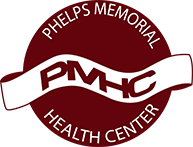Holdrege Rotarians learned about orthopaedic surgery options from Andreas Sauerbrey, MD, a Board Certified Orthopaedic Surgeon at Phelps Memorial Health Center. Dr. Sauerbrey specializes in shoulder/upper extremity surgery, sports medicine, and joint restoration. He has a special interest in shoulder arthroscopy and reconstruction and biologic treatments including platelet rich protein (PRP) and growth factors.
Dr. Sauerbrey told Rotarians that he has done 1322 surgeries at Phelps Memorial since he began in August 2014. He noted that approximately 60% of his practice is shoulder surgeries.
“When a shoulder wears out, you have to decide what’s necessary to get the range of motion back,” he said.
He discussed some shoulder surgery options including the total shoulder replacement, reverse total shoulder replacement, and arthroscopic rotator cuff repair.
A total shoulder replacement is a highly successful procedure to reduce pain and restore mobility in patients.
“I replace the damaged or diseased head of the humerus (ball) and cartilage from the shoulder joint with a metal and plastic joint,” said Dr. Sauerbrey.
Dr. Sauerbrey explained that in a reverse total shoulder replacement he replaces a damaged should joint with artificial components that reverse the structure of the shoulder. He said that this procedure is most often used for patients who have had a failed total shoulder replacement and that it is a good option for patients who have had a complete tear of the rotator cuff.
“Implants used in the procedure will reverse the position of the shoulder’s ball and socket,” he said.
One Rotarian asked, “How are things improving over the years?” Dr. Sauerbrey replied that “The procedure hasn’t changed much since the 1950’s,” but added “what has changed are the materials that are being used. You aren’t going to wear these materials out.”
Andrew Wiedes, PT, said he has heard that “Many Nebraskans live in pain and aren’t as quick to seek care as some other states,” referring Colorado, where Dr. Sauerbrey resides.
Dr. Sauerbrey urged people to not live in pain. He noted that following surgery most pain is gone after two weeks and patients can recover and be back to normal activities in three months after the procedure for the majority of cases.




